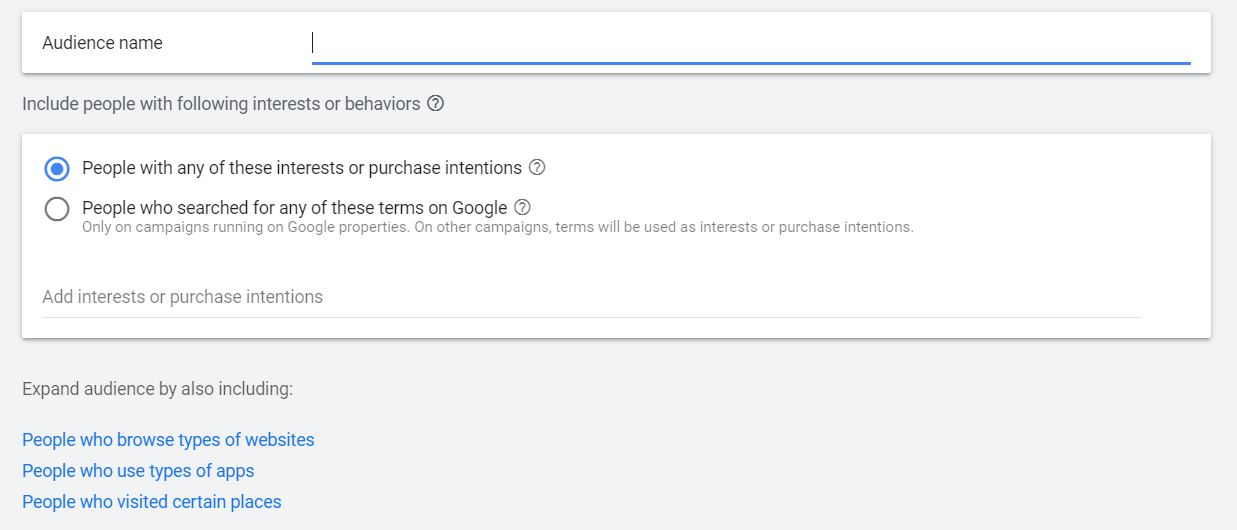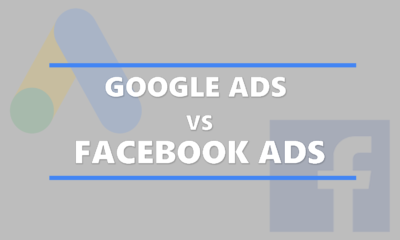Targeting the right audience is extremely important to the success of your campaigns. Custom intent audiences allow you to define and reach your ideal audience. With custom intent, you can go beyond Google’s pre-defied audience categories.
About Custom Audiences
Custom audiences can be setup for Display, Discovery, Gmail and Video campaigns. They are not currently available for Search campaigns. You can create custom audiences by adding website URLs, keywords and apps to your new audience. Google will then use its algorithmic-powers to take these inputs and show your ads to people with these interests or purchase intentions.
As an example, let’s say you are a local roofing company. You want to target people on the Display network interested in roofing services. You could create a custom intent audience with these inputs:
Keywords:
local roofing company
roofing company near me
roofing repair services
Local roof repair contractors
Website (URLs):
competitor1.com
competitor2.com
competitor3.com
competitor4.com
These URLs are examples, of course. The idea is to add competitor website URLs.
With these inputs, Google can now get an understanding of your target audience. Obviously, you are indicating that you are interested in showing your ads to people interested in roofing services. Google then goes to work and will start showing ads to people with these interests.
Custom Audience Inputs
| Reach audience based on | Inputs | Audience type |
|---|---|---|
| Interests or behaviors | Keywords | You can enter interest that represent your ideal customer. These are entered using keywords or phrases. When you enter behaviors or interestes, you have two options. Google will interpret the inputs differently, based on which option you choose. 1. The default setting (broader): People with any of the interests or purchase intentions. 2. People who searched for these terms in Google properties like Google search and Youtube. This can be a little more granular than the default setting. |
| People who browse websites | URLs | This is where you can enter website URLs you think your target audience would visit (or be interested in). Google will show ads to people who visit these sites or go to websites similar to these URLs. |
| People who use apps | Apps | Similar to URLs. Instead of adding URLs, you would enter Apps. |
How To Set Up Custom Intent Audiences
Ok, are you ready to give it a shot? Let’s go through the process and an example.
Steps To Set Up Custom Audiences:
If you want to expand your targeting, then you can. In the screenshot above, you will notice three additional options:
- People who browse types of websites
- People who use types of apps
- People who visited certain places
To use these sections, simply click on the link and add your inputs such as website URLs, names of apps or actual places people have visited.
To use these sections, simply click on the link and add your inputs such as website URLs, names of apps or actual places people have visited.
Custom Intent Audience Example
Let’s walk through a quick example. Let’s continue with the roofing. You are a local roofing company looking to target people interested in roofing services. Here is an example of how you might set that up using keywords and URLs.

I added six keywords that are highly relevant to what your target audience would search for. I also added the URLs of your competitors. I have no idea if these are real websites. This is purely for illustration purposes. These two sets of inputs gives Google good information about your target audience.
Note
When you enter this information, you will notice data to the right. Based on your inputs, Google automatically generates this data. You can see estimated weekly impressions, gender statistics, age stats, parental status and the topics of your audience.
Final Thoughts
Google Search is generally the best option for direct intent – targeting people who are actively looking for a product or service. However, with Google’s improvements in custom intent audiences, Display is becoming increasingly better at targeting audiences that are highly relevant to your business.
We have been having more success using custom intent with our clients. In many cases, we use it as a supplement to regular Search campaigns. In these cases we use just a small percentage of the monthly budget for the custom intent Display campaigns. If you have not gone this route yet, I recommend testing it out. You may be surprised!






